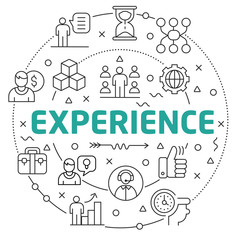For some time now, one of the biggest challenges facing contact centres has been how to ensure personalised interactions with customers. Customers want to feel the service they receive is tailored to their preferences and customised to meet their unique needs.
This expectation of a personalised experience is not something that can be underestimated either. According to Deloitte, one in four consumers are willing to pay more to receive a personalised product or service.
But, for contact centres — as well as most digital businesses — achieving the right level of personalisation is often easier said than done. When it comes to providing a personalised customer experience, local shops such as your neighbourhood grocer may seem to have a competitive advantage over most of today’s contact centres. They know you and probably your family too. They also know your preferences, purchasing habits and maybe even your daily routine. What’s more, they will usually be prepared to offer you a good deal or to go the extra mile to stop you from leaving after a bad experience.
This kind of customer service that works for everyone is ultimately what all businesses want to recreate. However, despite acknowledging the importance of personalisation, many businesses and their contact centres are still falling short by not making the most out their data by using analytics, which can enhance customer experience and loyalty while improving employee engagement.
How the customer experience just got personal with data analytics
The one-to-one challenge
When it comes to providing a personalised service, one of the biggest challenges for contact centres is that the customer experience is no longer measured on individual interactions. It is judged on the complete customer journey which, in today’s digital world of multiple touch points, presents complications.
From online, to social media and mobile applications, customers are interacting with businesses through more channels than ever before and many contact centres are struggling to deliver a consistent, personalised experience across these channels.
This can have a direct impact on a business’ bottom line. According to another report from Nexidia, eight in 10 consumers are willing to switch companies due to poor customer service.
This demonstrates how contact centres can’t afford to get it wrong if they want to remain competitive in today’s business landscape as well as highlighting the need for technology that can help provide the level of personalisation now demanded by consumers.
Cloud computing, for example, is providing contact centres with the ability to engage with customers much more quickly and personalise the experience by adding new channels or changing Interactive Voice Response (IVR) scripts in real time.
But cloud isn’t the only technology with the ability to transform the customer experience. Data analytics is also playing a major role in helping contact centres move from the traditional ‘one-to-many’ approach, to ‘one-to-one’ customer interactions.
The 3 types of analytics set to transform customer experience
Analytics makes it possible
If used in the right way, data analytics tools can make it easier to personalise the customer journey by providing valuable insights into how specific customers behave. This lets them re-create the local corner shop experience, but on a much larger scale.
Essentially, contact centres can build a complete view of their customers by capturing customer feedback from interactions throughout their entire lifecycle, which can then be used to manage effective follow-ups and drive organisational improvements.
Analytics also empowers contact centres to make intelligent decisions as needed to maintain performance and satisfaction – of both customers and employees. For example, analytics can gauge the emotional state of customers by analysing their interactions or take advantage of natural language processing to spot patterns in what they are saying. This provides the ability to track the most frequent topics mentioned by customers and identify trending satisfaction issues, which could be the difference between proactively solving an issue for a customer or leaving them frustrated.
Maximum value: Why and how should you make data analytics more accessible?
Internally, analytics can be used to assist employees. Intelligent reporting can be used to reward employee performance and provide real-time next-best-action guidance, thereby driving employee engagement. Any inefficient operational processes can also be identified and improved to ease the burden on contact centre agents.
Ultimately, the business value of analytics can be seen through various metrics and across different functions. However, most importantly, the use of data analytics tools can help contact centres move away from a one-size-fits-all approach and towards one-to-one interactions that are tailored to customers’ specific needs and preferences. In today’s hyper-competitive world, that’s an opportunity that can’t be ignored.








